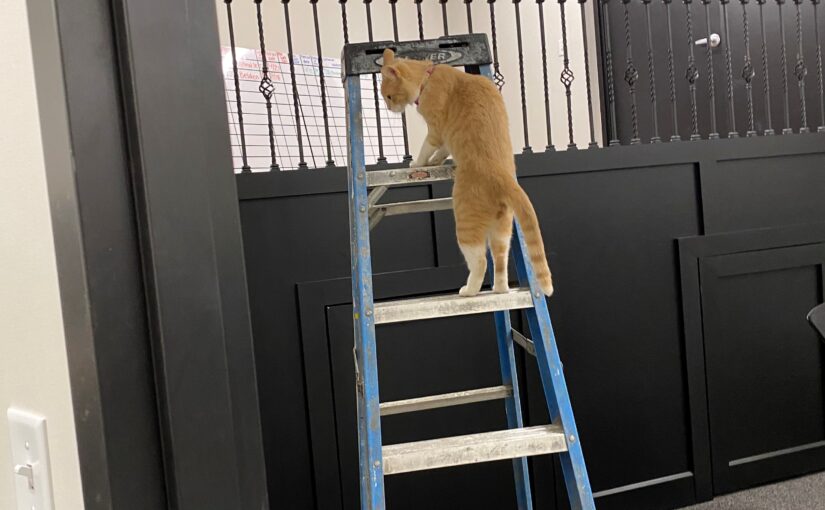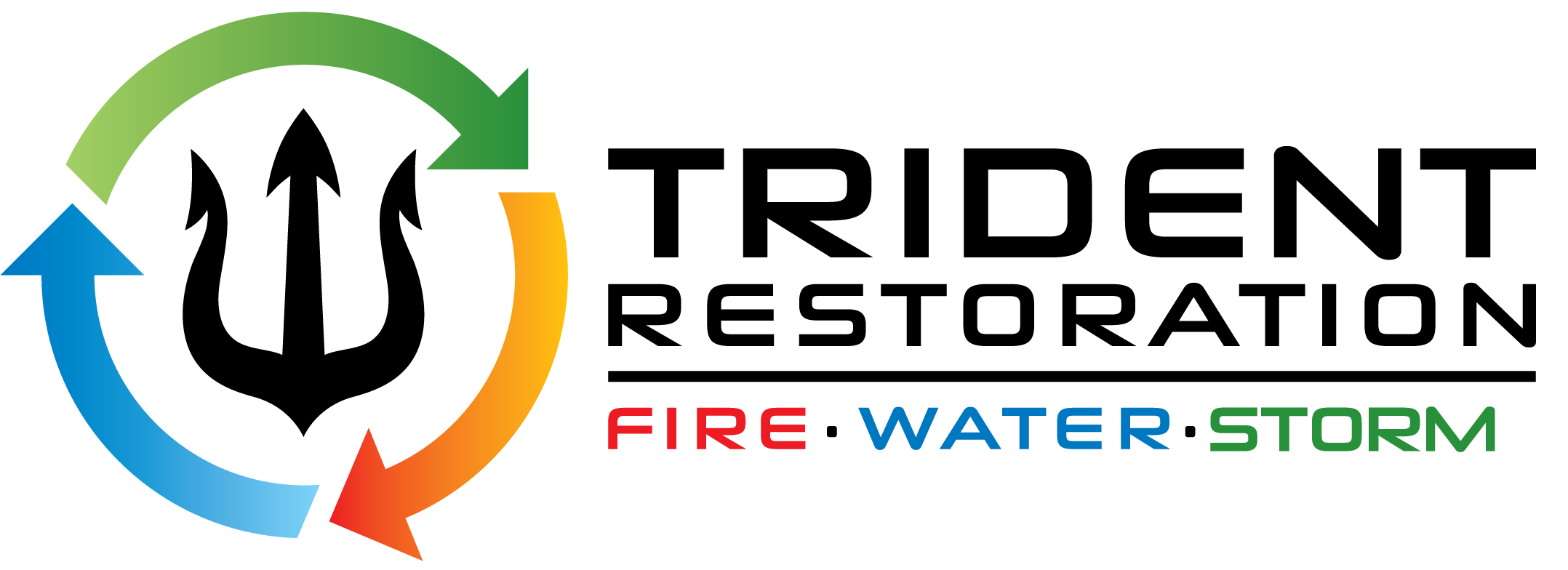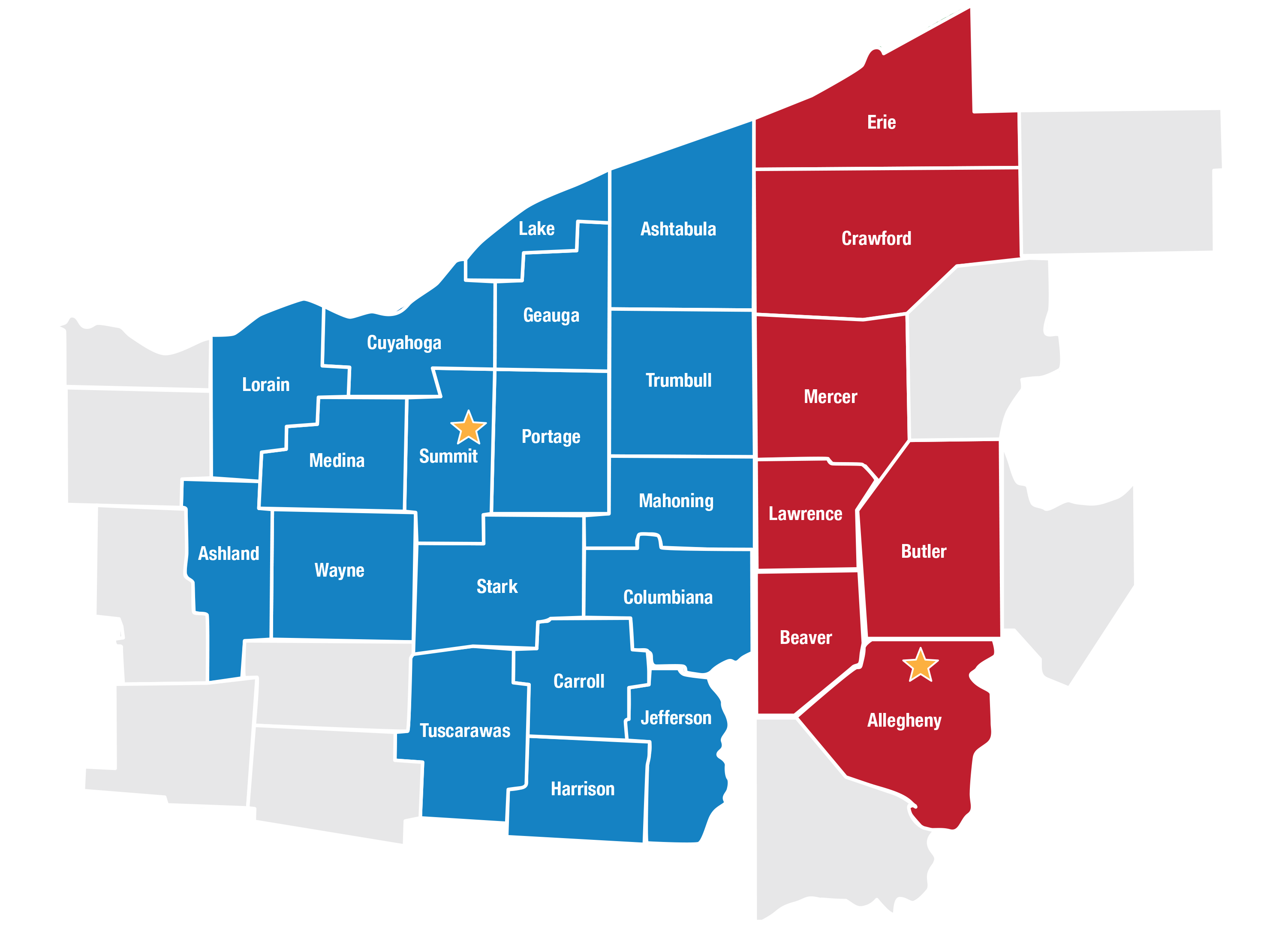Trident Restoration Types of Ladders
Check out this list of ladders for your reference in recognition of National Ladder Safety Month. Use this list to help keep yourself aware of the different types and purposes of ladders.

- Stepladder
- Doesn’t need to be propped up against a wall or other level surfaceFold them together for easy storage and transportation-adjustable length – usually ranges from 4’ to 20’Has two sides with four feet – one side for climbing and one side for supported choice for painting, changing light bulbs, decorating, construction, and landscaping
- Structure: expanding upside-down V

- Straight Ladder
- Also known as “single ladder”, looks like the climbing side of a stepladder – only one sidedNon-self-supporting ladder needs an anchor at the topmost section portable – with no hinges
- -adjustable length – ranges from 4’ to 30’Structure: two side rails connected with evenly spaced
- rungs
- Good for roofing, construction, and exterior maintenance projects (cleaning gutters)

- Platform Ladder
- Self-supporting ladder with a platform at the top
- Platform enables you to stand at its highest point
- Nonadjustable length is 2’ to 18’
- Two-sided -one side for climbing, the other for support
- Structure: platform with railings – hinged
- Great for standing for long periods of time – landscaping, painting, installing hardware, arranging displays, construction

- Extension Ladder
- One-sided, non-self-supporting
- Two-section adjustable ladder ranging from 32’ to 60’
- Three-section adjustable ladder ranging from 60’ to 72’
- Probably has a rope and pulley system
- Structure: two side rails connected with evenly-spaced rungs in addition to two or three adjustable sections
- Great for reaching tall heights – roofing, construction

- Trestle Ladder
- Also known as double front ladder
- Supports two people at once
- Self-supporting and portable
- Non-adjustable length up to 20’
- Structure: hinged for easy storage
- Both sides are good for climbing
- Good for projects that require two people working in close proximity – painting, multi-person installations

- Multi-Way Ladder
- Two-sided self-supporting
- Can function as a step ladder, extension ladder, trestle ladder, etc.
- Adjustable length from 4’ to1 3’
- Structure: transformable with hinges
- Good for home renovations, small business maintenance needs
Metal Ladder
- Typically made of aluminum
- Pros:
- lightweight
- Affordable
- Durable
- Cons:
- Conducts electricity
- Reflects ambient temperatures
- Pros:
Wood Ladder
- Pros:
- Non-conductive
- Affordable
- Resistant to ambient temperatures
- Cons:
- Heavy
- Potential durability issues
Fiberglass
- Pros:
- Durable
- Non-conductive
- Resistant to ambient temperatures
- Cons:
- Expensive
- Heavy
Duty Ratings
- Type III (light duty)
- Holds up to 200 pounds
- Common for household use
- Type II (medium duty)
- Holds up to 225 pounds
- Common for construction or commercial work
- Type I (heavy duty)
- Holds up to 250 pounds
- Common for industrial applications with heavy equipment or gear
- Type IA (extra heavy duty)
- Holds up to 300 pounds
- Common for industrial applications with extra heavy equipment or gear
- Type IAA (extra heavy duty)
- Holds up to 375 pounds
- Common for special jobs that require extremely heavy equipment or gear

Parts of a ladder
- Top cap
- The topmost
- Used to secure front and back parts of the
- ladder together
- Can be used to hold various items
- Rails
- Rear side rail – one of two legs that helps stabilize the ladder without needing to lean against a stable object
- The vertical portion that holds the steps in place
- Shelf
- Used as a mini workstation
- Spreaders
- Used to keep the rails of the ladder from splitting apart
- Locks the ladder into position while it’s extended
- Fly section
- On extension ladders – allows for extra heights when a higher point is needed to reach
- Base section
- On extension ladders – always remains static. Does not move up or down. Interlocks with the fly section
- Rungs
- The “step”
- Rung lock
- Secures the fly section in position
- Brace
- Keeps the short segment of the rail from buckling inward or outward during usage
- Feet
- Prevents the ladder from moving and slipping
- Keep in contact with the ground
- Safety rail
- Helps you maintain balance
- Steps
- Allows you to stand on the ladder
- Used to climb up and down the ladder
- Typically are anti-slip
- Rope & Pulley System
- Enables the fly section to move up and down

